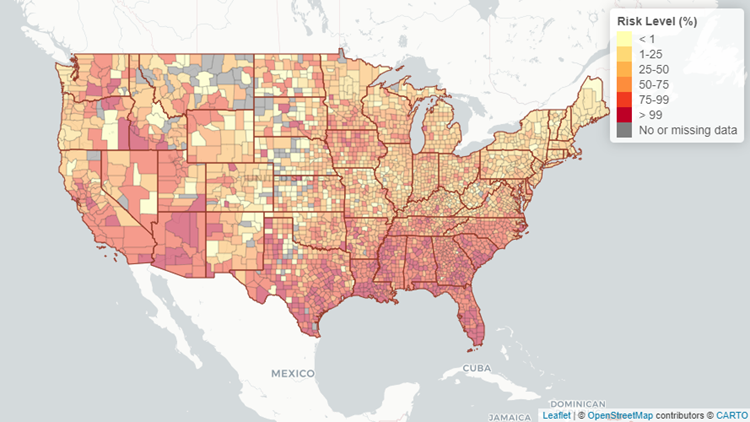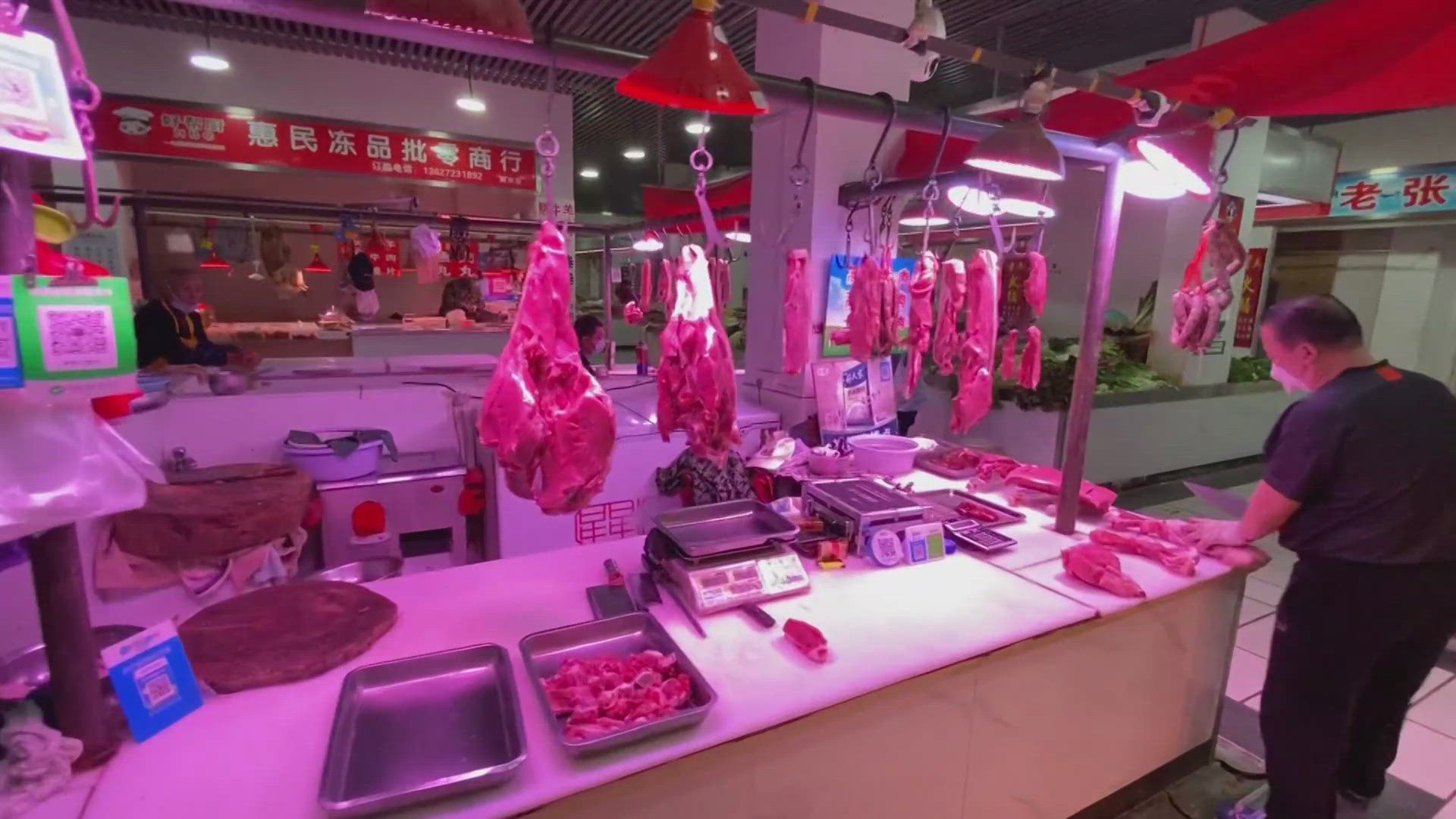A new tool developed by Georgia Tech allows people to look up their risk of encountering COVID-19 at events, based on the county they live in.
The interactive map allows users to choose a county anywhere in the United States, choose the event size (anywhere from 10 people to 10,000), and then calculate the risk that at least one COVID-19 positive person will be present.
For an event with 100 people:
In Dallas, Ellis, Navarro, Anderson or Titus counties, the risk that at least one person would test positive is 99% or greater as of Tuesday, July 14.
In Tarrant County, the current risk level is 96%.
In Parker County, where a rodeo over the weekend saw hundreds of attendees pack in without masks, there is a risk level of 88%.
Collin County has an 82% risk level, while Denton County comes in at 79%
For an event with 10 people:
The risk for events with 10 people is much lower across North Texas, but it very much so still exists.
Anderson County, in fact, still has a 77% chance that one of those 10 people would be infected with COVID-19.
In Navarro County, that risk drops down to 47%, then 45% in Titus County.
Dallas County has a 41% risk level for a group of 10, while Ellis County is at 36%. Erath County has a 30% risk level. Hunt and Kaufman counties are a 29% risk, while Tarrant County is 28%.
The interactive map is based on data from The COVID Tracking Project at The Atlantic, which pulls daily data on COVID-19 testing and patients from all 50 states. It's also based on 2019 U.S. Census data.
The risk assessment tool was developed by researchers at Georgia Tech's Institute of Technology, Biological Sciences (GT-BIOS) and the Applied Bioinformatics Laboratory (ABiL).



